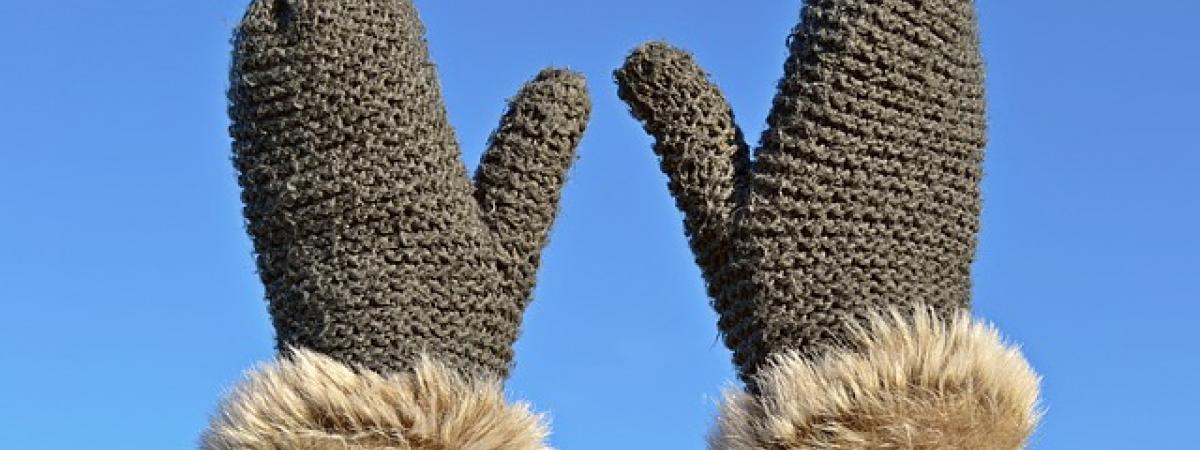Everything you need to know about Raynaud's

Are your extremities exquisitely sensitive to the cold? Do your fingers turn a waxy white in wintry weather? Raynaud syndrome can affect everything from your nose to your nipples (though fingers and toes are most commonly affected), and up to ten million people live with it in the UK. It’s important to #KnowRaynaud's.
In 1993, glove puppet Sooty’s “right hand man” Matthew Corbett suddenly developed a problem with his hands. The fingers turned white and his hands were freezing and numb: Sooty suddenly felt very remote and distant. These are classic signs of Raynaud’s.
Your blood vessels in Raynaud’s
Everyone’s hands get cold in cold weather – it’s a protective mechanism whereby the small blood vessels in your fingers narrow when cold, redirecting blood to vessels deeper in the body, keeping vital organs warm. Cold hands really can help you keep a warm heart.
In Raynaud’s, the response of your circulation to the cold is excessive. Blood supply is completely cut off to the fingers when the blood vessels suddenly spasm in the cold. The thumb, interestingly, is often spared.
Tricolour skin
In Raynaud’s, the fingers commonly turn white then blue then red: the colours of the French Tricolour and rather appropriate since the syndrome is named after Maurice Raynaud, the French physician who first described the condition in 1862.
The deathly white fingers of Raynaud’s are because they’re bloodless; the bluish tinge represents reduced blood flow returning to the skin; and the fingers turn a bright red when blood flow is restored.
Sometimes the classic triple-colour-change is not seen: affected fingers may turn only white, or proceed through a purple or greyish black stage.
Triggers
Aside from cold temperatures, attacks can also be triggered by emotional stress since stress hormones cause the clamping down of certain blood vessels, just as cold does.
Smoking a cigarette to relieve stress will only make things worse since nicotine can also narrow blood vessels. What’s more, research has shown that smoking can in itself actually increase anxiety and stress, despite creating an immediate and short-lived sense of relaxation.
For some people working with hand-held vibrating tools, an industrial injury called “Vibration White Finger” occurs, when attacks are triggered through the vibrations. The symptoms sometimes stay even when the work is stopped.
Raynaud’s can also be a result of an underlying health condition such as lupus, scleroderma or rheumatoid arthritis.
Troubles
Numbness in the fingers and toes during the attack - and pain, swelling and throbbing as it finishes – are the most common consequences of Raynaud’s.
In more serious but rare cases, Raynaud’s can cause skin ulcers and even dead skin (gangrene) which can be hard to treat.
For nursing mothers, Raynaud’s can cause excruciating pain at the nipple during breastfeeding; some mothers choose to pump milk if the pain doesn’t stop.
Treatments
Keeping warm through layered clothing, wearing gloves and avoiding air conditioning can be key to managing Raynaud’s; holding cold drinks in insulated tumblers and doubling up on plastic cups can also help. Steering clear of stressful situations is not simple, but it may help prevent an attack.
When these approaches don’t work, drugs can be used to improve your circulation. The most commonly prescribed is nifedipine, which relaxes and opens small blood vessels in your fingers and toes.
Drugs used for other conditions have also been tested in the treatment of Raynaud’s and amazingly, certain antidepressants, statins and even Viagra and Botox have all shown some promise in restoring circulation. It’s not unusual for medicines to be able to multitask in the body: not all ‘side effects’ are bad when it comes to drugs and for those with severe Raynaud’s, some are very welcome indeed.
Oh, and scientists are testing whether a dose of strong cocoa might help too. Here’s hoping.
